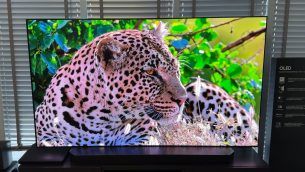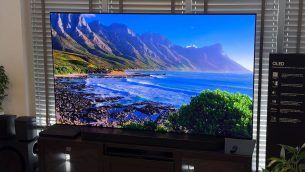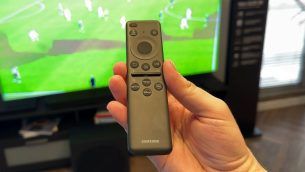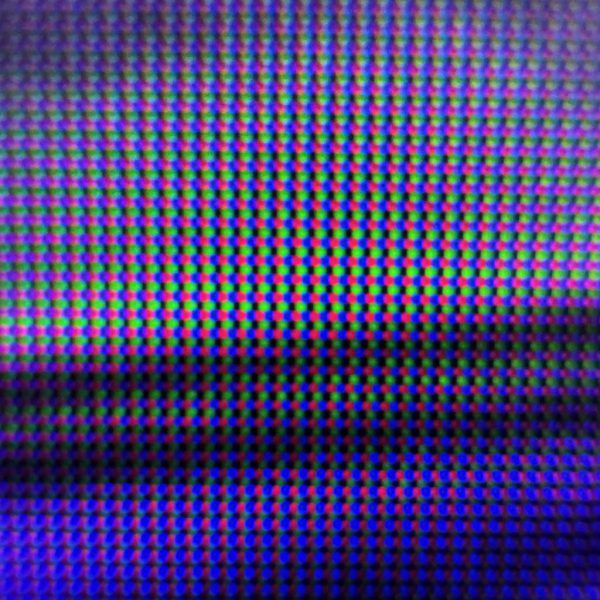Samsung also brought their 2024 TV range to Romania, the ones announced at the beginning of the year at CES.
In principle, there would be the following models:
- OLED range: S95D and S90D, the second not yet released here, but coming soon.
- Neo QLED range: QN95D, QN90D and QN85D.
- 8K range: QN900D and QN800D
Samsung also has a dedicated page on the official website where you can pre-order the TVs and you will also receive a soundbar as a gift. The launch prices are high, however, a 55-inch S95D is listed at 12,000 lei.
And eMAG lists the S95D TV with a 2,500 lei gift voucher, then valid for Samsung products. Basically, you get a soundbar with a subwoofer, that is.
The suffix D represents the current generation. 2023 TVs had the letter C in the tail. In the OLED range there is also the S85D series, but I understand that this will not be brought to Romania.
I looked at three of them comparatively, namely the S95D, QN95D and QN900D. Top of the range. Between the first two it’s increasingly difficult to see differences in image quality, although the former is an OLED that can achieve absolute black by effectively turning off individual pixels.
However, the QN95D has so many dimming zones that the experience is very similar in the end. Probably 90% of people would say there is no difference between them and whichever model you choose will give a great picture.
The QN900D, with its 8K screen, is in a different league though. It’s not just the higher resolution, which on an 85-inch screen matters (btw, it’s listed on eMAG, for those of you who took a serious Easter treat), but on this model Samsung somehow manages to fit in a bezel as thin as on phones, I think it’s 2 millimeters in total. It just looks like a screen.
All 2024 models, however, have a new processor and the key word is AI. The TV uses AI functions for upscaling, sound processing and more. The processor better understands what matters in each frame. For example, if you’re watching football and the ball is flying around the screen, the TV will keep it clear when on other TVs it would just be a blurry streak.
That may be so. All in all, I’m a fan of OLEDs and would go for an S95D or an S90D. The thing to know here is that the S95D only uses Samsung panels, which are some QD-OLEDs. This means that they use individual pixels for brightness, like any OLED, but the layer that gives color is provided by quantum dots crystals, which generate vivid and well-tuned colors. QD-OLED is probably the best technology in the OLED market.



The S95D also has an anti-glare treatment on the screen surface, so it keeps the reflections in the camera under control better, and the brightness has increased compared to last year by about 20%.
All ranges have a maximum refresh rate of 144 Hz, HDMI 2.1 ports and gaming functions, plus various combinations of multiple speakers and powers of even 60 and 80 W. However, I don’t insist too much on the sound. It seems to me that a TV over 4000 lei should always be paired with a quality soundbar. You’re investing in picture quality for nothing if you don’t also bring the sound to a higher level than the speakers in a thin TV can reproduce, and an eARC-connected soundbar would be ideal, maybe with a subwoofer next to it.
All of them also have a small remote control. The model charges from the sun and ambient light, like the previous ones, but also from the electromagnetic radiation of Wi-Fi networks, it said. I can’t wait for someone to test the charging rate of a remote placed in a dark room with only a wireless router around.

S90D and the OLED panel difference
For the S90D, however, Samsung sometimes uses Samsung QD-OLED panels and sometimes LG OLED panels. There is nothing wrong with these either, LG’s OLEDs are very good, but the technology is one called WOLED, which means they also have a white subpixel for higher brightness. However, LG panels do not use quantum dots.
The problem is that Samsung doesn’t say what kind of panel is on a particular TV, nor has it given them different codes. It is not known if S90D models with LG panels will only arrive in certain countries, if they will be in batches, if they will be mixed within the same batch, etc. For Samsung, it’s all OLEDs, they don’t even use the QD-OLED designation in their labels or communication.
I don’t have a solution for this. One would be to take a picture with your phone’s macro camera of a TV on display in the store. Just about any better macro camera can shoot subpixels of a screen, as long as you hold it close enough and shoot a white or gray area.
Here’s how my photo of an area on the Samsung S95D TV turned out:

The RGB subpixels of a QD-OLED panel are clearly visible. If it was an LG WOLED panel, it would still have a white subpixel. I didn’t have an S90D to photograph, as I said.
However, this method is not very secure. Many TVs on the shelf in stores are actually given directly by Samsung from showroom or pre-production ones, and I would expect them to come out of a Samsung factory. Others are put on the shelf and sit there for months, but the lots in the store’s warehouse can be with several types of panels in the meantime.
The only way would be to have the TV tested in store and look at the subpixels with a macro camera or a magnifying glass, or do it at home and return it if you don’t like the result.
I’m of the opinion that if you’re picking up a Samsung OLED TV because you like the idea of quantum dot color generation technology, then you should know that this is what you’re buying. I would test it as I wrote above.












